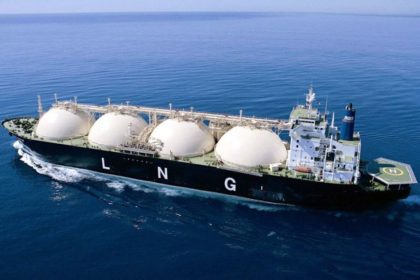 Is the US seeking to tap into Morocco’s natural gas projects? This question rose to the fore after media reports said that chief of the US Environmental Protection Agency (EPA) Scott Pruitt is in Morocco this week to “update” environmental cooperation under the US-Morocco Free Trade Agreement to include an option to supply the Kingdom with natural gas.
Is the US seeking to tap into Morocco’s natural gas projects? This question rose to the fore after media reports said that chief of the US Environmental Protection Agency (EPA) Scott Pruitt is in Morocco this week to “update” environmental cooperation under the US-Morocco Free Trade Agreement to include an option to supply the Kingdom with natural gas.
The EPA explained that Pruitt’s talks in Morocco came on the sidelines of the discussions he had in Rabat on sharing the “US best practices for solid waste management, public participation and crisis communication pursuant to the former Environmental Work Plan,” which was established under the 2004 trade agreement.
“These meetings allowed us to directly convey our priorities and best practices with Moroccan leaders, as well as identify opportunities for continued cooperation, as our two countries further talks around the Environmental Work Plan,” said Pruitt.
“We are committed to working closely with countries like Morocco to enhance environmental stewardship around the world.”
It was not clear how much Morocco is interested in buying liquefied natural gas, or LNG, from the United States, Pruitt told the Washington Examiner.
Morocco’s LNG project is attracting the interest of key global suppliers. Last September, Russia’s Energy Minister Alexander Novak said Russian companies are interested in Morocco’s gas projects, notably the liquefied gas terminal in Jorf Lasfar and the Moroccan-Nigerian gas pipeline.
The Minister noted that negotiations are underway between Gazprom and Novatek and Morocco to secure LNG supply from Russia’s Yamal-LNG and Arctic LNG.
Qatar, for its part, has widened the gap with its competitors over the supply of 5 million cubic meters of LNG annually to the Jorf Lasfar Installation.
Besides investing in renewable energy to cover 50% of Morocco’s energy needs by 2030, LNG features prominently in Morocco’s energy transition. Morocco launched a gas strategy to boost its energy security and relieve itself from dependence on Algerian gas. The Kingdom’s goal is to move from being a coal-dependent importer to a market in which clean energies and natural gas play an increasing role.
Morocco’s energy strategy is also geared towards satisfying a rising domestic demand on electricity as the country is projected to consume 65 TW/h by 2025, i.e. a 6.2% increase compared to 2016.
The Moroccan LNG National Development Plan, approved in late 2014, features an LNG onshore terminal in Jorf Lasfar near El Jadida to be completed for a total cost of $4 billion.
The terminal will have a storage capacity of 5 billion cubic meters of LNG per year, a fitted marine jetty, regasification plants and new high-pressure gas transmission pipes.
The LNG import facility at Jorf Lasfar will help bring the share of LNG to 13% of Morocco’s energy mix by 2025.
Recently, Sound Energy made breakthrough with several exploitable gas discoveries in Eastern Morocco. The company said that the Kingdom will become a key player in the global gas map by 2019.
The latest natural gas discovery was made by British company, SDX Energy, as part of its well drilling campaign in Sebou, Eastern Morocco.



